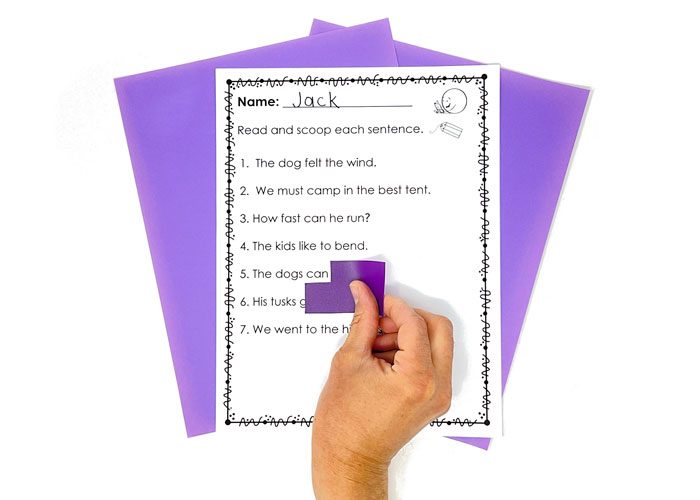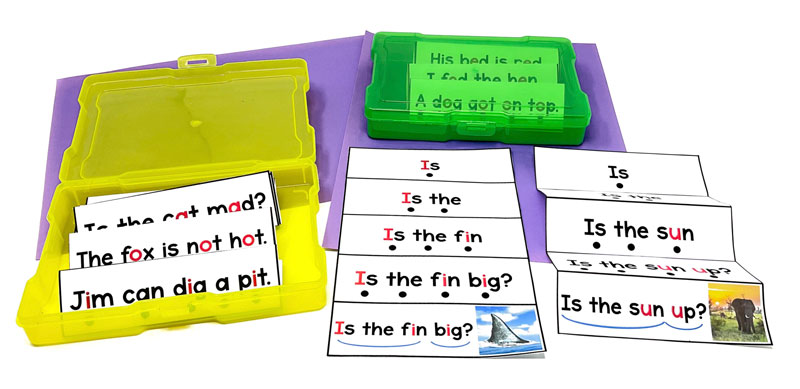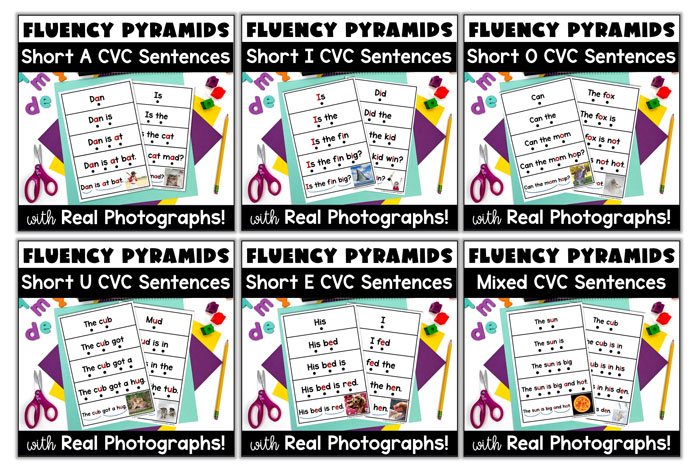Your students are decoding accurately. They understand the sound-spelling patterns you’ve taught and are not guessing at words! Success!
Now we want to take them from robotic, word-by-word reading to smooth sentence fluency.
We know that fluency is the bridge to comprehension. We want the energy in our students’ brains freed up to focus on understanding the meaning of all those words they can now read.


When we help students build their fluency, not only are we allowing greater comprehension to happen, but we are also creating a positive feedback loop. When our children’s reading becomes more automatic, it becomes more enjoyable for them. And when something is more enjoyable, students are more motivated, which further strengthens their skills. This is our goal – literacy and enjoyment for all!
Before we get into activities to strengthen reading fluency, I’d like to share one of my favorite quotes from Maryanne Wolf, cognitive neuroscientist and author of Reader, Come Home and Proust and the Squid:
“Fluency is the developmental process that connects decoding with everything we know about words to make the meaning of the text come to life. Fluency is a wonderful bridge to comprehension and to a life-long love of reading.”
Now, how do we make this happen for our students?
Here are four of my favorite activities to build reading fluency at the sentence level.
1. Reread with a purpose
Using sentences on strips or a list of sentences on a page, set a purpose for students each time they read.
For the first read, ask them to carefully point to each word, focusing on reading each word correctly, sounding out if needed.
For the second read, ask them to focus on phrasing. I ask them to “scoop” (drawing a scooped line if the sentence is on a consumable workbook or printed page) under each phrase. In the beginning, I model this by reading each phrase, pausing in between. Then I ask them to draw a scoop underneath that phrase. Next I have them slide their finger along each scoop as they read the sentence back to me.
For emphasis, I ask them to notice the difference between me reading the sentence very robotically, word by word, and then smoothly reading phrase by phrase. I ask them which sounds better. I also tell them that reading this way helps me understand the sentence better because it sounds like how I naturally talk.
For the third reread, I focus on expression. Since my brain is freed up to focus on meaning, I model my thinking about how my voice should sound. If there’s an exclamation mark, I say the sentence with extra feeling! If there’s a question mark, shouldn’t my voice go up at the end? We continue to practice reading the sentence with appropriate expression.
Occasionally, just for laughs (and to highlight how important expression is), we try reading the sentence the “wrong” way. For example, we might sound really sad or angry reading a sentence like “These hot chips taste so good!” And then we try it the right way and notice how that makes much more sense.
2. Sliders
If you’re from the Midwest, White Castle burgers may come to mind. But no, I’m talking about a different kind of slider. A reading slider is simply an index card or a small rectangular piece cut out of an old folder, with a smaller rectangle cut out of the top left corner.
To use this slider for fluency practice in small groups or one-on-one intervention, I first model how the slider helps me go from word-by-word reading into smoother sliding through the phrases of each sentence.
Then I’ll challenge students to try it, but I’ll be in charge of sliding the card. I’ll ask them to try to keep up with my pace (adjusting to their individual level). Finally, I’ll have them try it by themselves when they feel ready.
I may use this technique for a few days or a few weeks until students are used to reading more fluently. I think of these sliders like training wheels, and I tell students to let me know when they’ve “got it” (and are in the habit of reading each sentence with appropriate phrasing and expression).


3. Digital decodable sentences
For those of you who prefer a no-prep option, using already-made sentences is a time-saving way to provide sentence-level fluency practice for your whole class. This also works well for online teaching or tutoring! The words for each sentence are hidden beneath boxes, so you can control how fast or slow the words appear with just a click.
For the first read, I tell them I’m going to show each word one at a time very slowly so that they can focus on reading each word accurately. No picture is provided yet, so no guessing is allowed!
Then the next time we read it (right then or the following day), I tell them I’m going to reveal each word a little faster. By the end of week, I reveal the words one phrase at a time to help my students read smoothly.
I remind them that it’s not a race. The goal is not speed reading, but to make our reading sound like we are talking naturally. Kids think this is a fun challenge.
To increase interest and engagement, an interesting real photograph is provided on the slide AFTER students read the sentence.
4. Fluency foldables
My final favorite is what I call a fluency foldable. Sometimes called “sentence pyramids” or “sentence ladders”, the concept is the same.
Students start with just reading the first word or two of a sentence. Then each line adds a word or two more until they get to the bottom of the pyramid or ladder and read the complete sentence.
The idea is to build motivation by getting an easy win at the top, increasing confidence and fluency as they read each line.
You’ll find quite a few resources available for this activity, but many of them have the problem of providing the picture at the top of the pyramid.
That’s why we made our CVC fluency foldables, so students can practice decoding accuracy and sentence fluency first, with a real photograph revealed at the very bottom. The picture stays hidden until the last flap is unfolded.


We also provide differentiated versions for varying levels of support, including color coding of short vowels, dots under each word, and building up to scoops under each phrase. There’s also a “plain” version for students who no longer need those supports.


I wish your students much success and enjoyment as they improve their fluency and build the bridge from decoding to comprehension!

